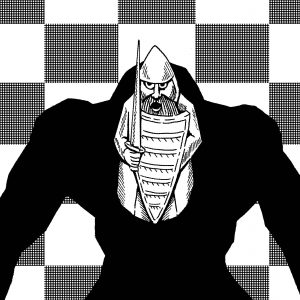Both armies are at a standoff across the field of battle, bright banners flap in the slight breeze, the noon sun glints from the gleaming razor tips of spears and the blades of swords and axes. The dread war-engines vibrate the ground as they’re wheeled into position. Catapults, ballistae, and scorpions are readied. The shouts of the sergeants echo up and down the opposing lines and the frontlines begin advancing towards each other.
Suddenly, choruses of hideous roars tear the skies as a group of dragon-riders surge from the horizon swooping over one side and laying waste to the other. Soldiers desperately try to protect themselves with their tower shields and spears in small bristling testudoes. The earth begins to shake beneath the soldiers’ feet frightening the flanks on both sides loosening their formations. The opposing side, victims of the dragon-riders, opens its middle and a tight cluster of stone golems thunder towards the armored heart of their foe.
As the golems crush their way into the enemy’s ranks, the dragons peel off and strafe the stone monsters with fire barely slowing them down. The warriors of each army crash together in a wave of blood and iron their champions leading. A small squad from the dragon-riders’ side engages the golems with a barrage of acid grenades forged by a mercenary alchemist. Both charging sides meet and the momentum breaks like a wave of blood with the deafening clash of steel and shrieks of dying men. From this blood tide, the champions emerge finally meeting in the middle of the chaos and duel to the death for their respective side and causes.
Fireballs and lightning called down from the heavens by war-wizards at the rear ranks of both armies add to the deafening cacophony. Just then, another smaller cadre of dragons darts into the fray above to engage the enemy dragons. The new comers are less in number but with them comes an enormous blue-black dragon complete with a small crew of riders on his back armed with crossbows, lances, alchemical grenades, and other nasty droppers. The sky darkens with smoke, fire blasts, arrows, and large projectiles as the battlefield spreads from horizon to horizon.
It is total chaos, this battle will be devastating and lay waste the battlefield and most of the surrounding territory which may lay fallow for at least a century after. It’s also cool looking and really gives the Player Characters (PCs) and the Game-Master (GM) multiple opportunities to shine.
The Fantasy Battlefield is a spectacle to behold and its aftermath a tragedy to mourn. It provides the opportunity for the full exercise of strategic thinking, high drama, and innovation. As well as providing potentially spectacular set pieces for the GM. In a fantasy setting, when war occurs it is probable a scene very much like that described above will play out with only the scale varying.
That is because if one side is able to obtain a special and powerful weapon the other side, if it has a competent intelligence network, will find out about it before the fighting. Thus, they will rush to enact countermeasures and try to get their hands on either the same type of weapon or anything else of a similar power level. Of course, this will cause an arms race if the other side is equal in espionage. In addition, if actual world history is any evidence when a weapon or strategic advantage becomes available, it will be used even if just once. In the very least, all the contemporary powers will seek it out vigorously.
There are many reasons to implement large battles and carry out war in a fantasy roleplaying game despite the complications to the Game-Master and the possibility of loss on the Player-Characters’ side of things.
War in game terms is a storyline drawn from a series of confrontations including from the political and not just the combat side involving at least two opposing powers. Within this blob of mass confrontations and tangle of story lines is Mass Combat. Mass Combat is more a technical term to describe mechanics that come into play during instances of combat between at least two large masses of characters. During Mass Combat military units (groups of individuals, typically faceless mook type NPCs) engage in combat where the PCs act as champions or sometimes as complete units unto themselves.
Note that Mass Combat mechanics may not be included in some game systems and those that do will vary greatly in how they function. Therefore, any direct or specific mechanical references will be avoided and more general terms and ideas will be favored in this article.
With the basic mechanical ideas of Mass Combat and Combat Units GMs can begin to construct the spectacle of fantasy warfare. As stated before a battlefield, especially if the battle is a big one, is a remarkable sight when gleaming armies face off not to mention when the fantasy elements come into play adding even more spectacle to the fray. These elements are the true fireworks that really make the set piece unique often involving any one of the Big Four by themselves or in combination.
The Big Four
The Big Four refers to the four major weapons on the field of fantasy warfare: dragons/dragon-riders, golems/constructs, wizards/magic-users, and the undead. Dragons/Dragon-Riders are the super weapon on the field whether they themselves are conscripts, generals, or mounts with a rider or crew. They are a game changer on the field and prompt all sorts of countermeasures and strategies. Golems/Constructs are another super-weapon but one that is most useful against enemy ranks and walls. They are very difficult to obtain and may actually be harder than dragons to get. Golems are more equipment or war-machine than soldier and used thus.
On the other hand, Spell-casters on the field can implement any number of weird and highly powerful strategies using a wide array of magical abilities. These are the easiest of the four to obtain typically serving a mercenary or allied role though they may have their own reasons for joining an army on the march. Spell slinging against the opposite side and summoning forth new and terrible foes for the enemy is their primary battlefield strategy. They can also double as espionage and information gathering agents through their magical abilities. Secondary roles depend on the spell caster’s repertoire such as any healing abilities allowing the mage to run battlefield triage.
The last of the big four are the undead. These often being a part of certain forces popularly considered evil or the full ranks of certain villain types like dark lords, liches, and powerful necromancers. Undead forces typically consist of reanimated corpses or skeletons that can function on the battlefield as warriors and with the ability to take at least simple commands. However, they are often of a weaker type of undead and thus are somewhat weaker than the average soldier is.
The primary strategy of such units is always to overwhelm with numbers and rely on the relentlessness of the undead as they never fatigue or tire. The average leader of one of these units is usually a stronger type of undead though often not of an exceptional level. However, Priests or Paladins (holy warriors) that have certain powers that directly counter undead creatures are a common element that opposes these types of units. They are usually also a part of worlds where these types of creatures run common as a form of universal balance.
Logistics for an undead force are somewhat simplified as they do not get fatigued, they will not starve or die of thirst, and inclement weather has to be severe in order to stall or endanger them. However, in a snowstorm they can freeze solid if they have flesh. Under a hot sun or in dank humid weather, their flesh can rot from their bones. These concerns can make certain types of undead such as zombies less of a threat under specific weather conditions.
Local resistance may be easily directed against a force of undead moving through specific areas. This includes certain religious forces that may have no real interest in the ongoing struggle other than to vanquish the walking blasphemy of the undead. Disease is also a concern when dealing with a diverse army that consists of living and dead forces, as is the predation of the dead upon the living. In addition, those unfortunate enough to be in the way of that force’s path whether allied or not might suffer or die without necessarily being a direct target.
The Big Four are by no means the only exceptional things on the fantasy battlefield. There are also the humanoid powerhouses, which seem on the surface to be more appropriate as powerful soldiery or heavy infantry. This would include such creatures as orcs, trolls, ogres, giants, among others. These may be easier to recruit and maybe to maintain than the Big Four but they would primarily be soldiers and may have certain restrictions imposed on them depending on the setting. Aside from the usual Dark Lord, they may be completely unavailable due to the darkness of their monstrous hearts and even blacker souls (again depending on the setting).
These are not included in the Big Four as they are definitely a remarkable sight but they function much as standard soldiery with perhaps ballistic capability like a hybrid field piece (i.e. giants). Along with the powerhouse-humanoids on the fields of fantasy combat are the unconventional technology and strategies inspired by actual history and that produced by alchemy.
Alchemical Fire
Alchemy is the formulation and creation of certain meta-magical substances through a means that is a mix between modern chemistry and ancient mysticism, a lesser form of magic. The products that alchemy can produce aside from its historical focus on converting lead to gold can be useful on the battlefield though they would be expensive and in short supply. Alchemical substances such as napalm, phosphorous, fumes (gases), acids, naphtha, and black powder are especially of note. If an army is using even one of these as ammunition, they would require the alchemist(s) to tag along and replace spent ammo and to consult on countermeasures against enemy alchemical warfare. Note that alchemical ammunition could be jars, pots, or glass bulbs filled with chemicals launched from catapults even small clay-vessel grenades.
Alchemy only requires an alchemist and raw materials to produce the items and substances required by the commander. The alchemists themselves may or may not be mages depending on the system although typically mages will also have the ability to create these substances as well. These alchemists cannot only create gases, acids, napalm, and alchemical grenades but may also produce chemicals and drugs that could conceivably create alchemical super-soldiers by enhancing the common soldiery. However, this sort of strategy always comes with inherent risk and severe costs.
These costs inherent to alchemically enhanced soldiers being such things as drastically shortened lives, the risk of berserk units going on uncontrollable rampages, and even weirder effects such as soldiers just spontaneously combusting. Magical mutation and random transformations are also a possible side effect. Alchemists may also produce drugs that have very similar effects to those found in the real world and whose side effects only become noticeable in the long term sometimes long after the combat is over (for example: the German Military in WWII). This brings us to black powder.
Black powder in a medieval context would most likely be in the forms of low yield bombs or grenades. Explosives would be the domain of sappers and those seeking to undermine enemy fortifications. More advanced approaches to gunpowder would be the use of primitive match-lit guns (probably hand-cannons and fire-lances) and cannons but these would be impossible to aim and run the risk of explosion. Not to mention they would be very expensive even if there were a skilled enough engineer/armorer that could forge an effective and safe artillery piece. However, monster-sized cannonry could be a shocking set piece for an epic siege; a historical example being the Dardanelles Gun.
After massive bombards, rockets seem to be the next phase in technical superiority but again in a medieval setting if they exist then they will be expensive to produce and impossible to aim once fired. The main task would be to find the metalworker skilled enough to make the tube. These would be a fine counter to enemy dragons but the risk of explosion at ignition might balance that advantage to a certain extent. The forms of these rockets would range from fire arrows to the top technical achievement of iron-cased rockets. Given the ability to carry an alchemical payload, they could be more effective than those found in actual ancient history.
Heavy reliance on alchemical munitions and/or potions adds an alchemist and his entourage plus mobile equipment and laboratory to the logistics. Their wagon and any additional supply vehicles would become targets and the expense to maintain the alchemist’s mobile lab and supplies would be significant. However, do not discount the inventiveness of ancient unconventional warfare. Poisoned arrows, scorpions & poisonous snakes in large clay vessels or diseased corpses launched by catapult, warbeasts like elephants, and psychological attacks (severed heads of prisoners catapulted over city walls) increase battlefield options and are inspired by history. Just note that these tactics are a supplement to conventional warfare and tactics, not replacements.
Steam Punkery & Clockwork
With alchemists featuring on the field of fantasy warfare, clockwork and steam power warrant some discussion. Clockwork technology requires a power source (springs are possible for smaller clockwork), which could be magical but would also require advanced math for the engineering, tools, and skills to construct the parts. Similarly, steam technology would require a heat source and the storage capacity of the water required and the steam as well as well as the plumbing and knowledge of the pressures involved. Again, expensive, accidental explosions are possible, and an advanced knowledge of engineering is required for large enough engines, jets, etc. to be viable engines of war.
These limits do make it a rarity in medieval settings and more fit for Victorian era or even renaissance set campaigns but this type of technology can be possible with magic-users just not on an industrial level. The power source is probably magic or draconic in nature so still magic or at least relying on a magical power source to produce steam or electricity in order to make the machinery parts function. Making steam and larger clockwork weapons and vehicles the purview of hybrid spell casters, those that somehow have a solid knowledge of certain sciences like physics, math, and engineering as well as arcane ability. This fact alone probably makes them a rarity in any world where science and magic do not exist together in equal portion.
Steam-tech and clockwork make lower tech versions of modern weapons and vehicles possible such as tanks, cannons, and rockets – maybe even robot-like constructs but below the level of the Golem Army; steam powered war chariots, steam cannons, steam jets or even certain aircraft such as blimps or hot air balloons. All even in limited or singular quantity would be invaluable to a battlefield commander. Note that hot air balloons may be more in reach than the other examples.
This type of magical technology is not only out of place in a medieval battlefield but would be a massive surge forward in technology even if the source may be magical/alchemical. The apparatus and machinery operating on the steam from the source requires expert engineering and a high level of metalworking and forging. Essentially, the friendly neighborhood blacksmith and even armorer will not have the skill, knowledge, nor tools available to craft the highly engineered parts required not to mention the skills to design them. Powers acquiring such war-tech will make those with the skills and ability to create such things of extremely high value both as targets and as assets even if they are unwilling.
Once this type of technology rolls out onto the battlefield the culture itself would go into violent convulsions and types of confrontations not possible before may become commonplace such as rebellions among the peasantry and merchant classes, religious organizations that may hold vast wealth obtaining such technology, nobility being supplanted by technocracy, etc. What is sure is that if the technology is not “lost” in some fashion it will propagate and irreversibly alter your world in a few decades.
The other drawback is that a lone engineer, wizard, or alchemist probably will not have the skills, power, and resources to create more than a single clockwork or steam-powered type weapon which even though very valuable as a secret weapon or weapon of terror is very little use as a true weapon of war. This would also make them extremely expensive as well as requiring the development of certain resources to occur before they are even a possibility.
Why War?
The reasons to include war in your worlds and campaigns is manifold, the few mentioned previously in other parts of this series are the main benefits that apply to the GM and the PCs. There are diegetic reasons however; these are the reasons war might spring up organically due to conditions and elements in the fantasy world itself. The first is Good vs. Evil (GvE) of course true battles between to the two forces means that the campaign world exists in a Manichean universe. However, this GvE struggle does not have to be actual just the participants have to believe that they are the good guys and their opponents the bad.
Another prime motive for war is piratical. War solely for the purpose of the plunder and glory it will yield regardless of the price. Unscrupulous warriors, commanders, and politicians may want to participate just for the shear thrill and fun. This reason for war is reliant mostly on the greed of the participants but includes other more emotional motives not laser focused on one goal but harnessed in order to fuel the war effort.
War for profit and land is similar to the piratical reasons though with intentions to settle, occupy, or otherwise take ownership of them against the indigenous peoples’ will transforms piratical aims into Conquest. Another goal in this vein may be to secure a stream of revenue or eliminate a penalty (i.e. tax/tariff) on your goods exported to the targeted lands this being known as Imperialism. These last two, Conquest and Imperialism, can get a little dicey when roleplaying through them especially when sorting through the justifications for such but the role-play drama potential is also very high.
In addition, in medieval settings war for the securing of power and/or eliminating the competition may erupt frequently. Similarly, civil wars or wars of ascension may occur in large scale within or between certain countries. Smaller wars could breakout between nobility as well for any of the previously stated reasons including wars of pure ego and even ritualistic war. Religiously motivated war is also a factor especially where there is an entrenched religious power.
Religion can add an ugly side to any war regardless of the reasons and motivations behind it but certain religious powers may also ignite wars for purely religious reasons. These may be to convert nonbelievers or eliminate them or to combat a rival religious power. This is especially true when it comes to Crusades. All of these, if not initially, tend to feature or evolve to include strong profit motives very similar to piratical warfare but this cause can rapidly evolve into something even more insidious when philosophy becomes ideology in order to justify it.
War Master
Aside from the opportunity for strategy and high drama, there are other values to the GM of Fantasy Warfare in their campaigns. Set piece battles can give the events a sense of increasing scale and put the PCs through a trial by fire. They can also allow the PCs to be innovative and allow them to think strategically.
To bring in a sense of scale a GM should begin with standard medieval style battles and gradually move towards the high fantasy by gradually adding the fantasy elements as they increase in scope. This elevates a standard battle scene making each new fight a bigger spectacle especially if there have been previous battle scenes, it gives the GM a place to go that still elevates the action. It also grounds the action before it starts to become fantastical. To do this a GM needs to start gritty and small making the ruin of the post-battle field evident early on. Then escalate with increasing numbers and ever more present and inventive war engines and have known and beloved NPCs die in the fighting to heighten drama and the sense of risk.
Bring in the surprise elements of high fantasy (the Big Four) as the twist in the bigger battles and build the suspense of what will appear on the field for the next. By this time, the risk to valued NPCs should be evident, the stakes should be high to match the massive spectacle, and the Players by now should be able to fill in the devastation built on the vivid pictures of the comparatively smaller tragedies.
The larger battles including the final one can as set pieces widen the scope of the game world. They can deepen the souls of its characters through trial by fire with those burnt suffering the deepest test of their characters. This intensity should come in the later/last battles. However, all battles should inspire some sort of innovation on the part of the PCs. They could use their skills and character knowledge/powers to invent new modes of war or defense. The PCs should at least try to strategize and think about their resources. They may need to seek out new resources or gather their existent monies to finance invention maybe built on plans that they have cultivated.
What about the Adventurers?
Speaking of Players and their characters, why wouldn’t a warring faction have need of them? Are not reputed adventurers themselves a sort of weapon, though often unpredictable, on the battlefield that can swing the fortunes of war on a whim? PCs should be assumed to be heading an army or allied much like individual magic-users. They may be a part of the army because they have similar interests or other secret motives. A small unit of famous adventurers is probably more valuable as a scouting unit, recruiters, espionage unit, and/or flank guards for important command units in the rear or middle ranks.
Adventurers that are not valued or are being mishandled can find themselves in the front ranks as skirmishers. Nevertheless, if the PCs are not in any command positions then wide scale battle simply turns into a nerve-racking bore with a mindless hackfest to follow. Granted the group can maneuver on the field to hit what they see as relevant targets in the course of the battle possibly bringing some attention to themselves. This proving themselves on the field may warrant a promotion to better positions later.
Conclusion
When implementing fantasy warfare in your games keep in mind the implications of fantastical munitions, weapons, warbeasts, and the arms race it can spark. Do not forget historical ancient unconventional warfare either. Also, learn the major strategies and logistics involved in the Big Four or any special units that will be involved and give the PCs plenty of opportunity to be affected by and to affect the outcome including when they are on the losing side. Though the in-game political climate and economic reasons may contribute to the cause of war, the primary motivations for powers to engage in it are often limited to fighting “evil”, for plunder, or conquest/imperialism.
The fantasy tropes of the battlefield (the Big Four) have their strengths and weaknesses though their advantages may outweigh their burdens vastly. It seems the best countermeasure against an enemy with even one of these heavy hitters at their disposal is to get one of your own. Essentially if one side has a good enough intelligence network or if they suffer a single defeat at the feet of one to these super-weapons then they will desperately seek to not only sabotage and undermine their enemy’s efforts but begin their own to match force for force. This can be interesting in that it will set off a magic medieval arms race; a very interesting prospect indeed.
The GM can use war to enhance their fantasy campaign by using it in escalating portions, induce player innovation, and as a set piece in the campaign to put exclamation marks at the desired points. According to my brief and shallow research on the subject, just about half of campaigns incorporate Mass Combat and warfare at least some of the time. Maybe it is time for more GMs and their groups to explore the gaming potential of fantasy warfare.
[do_widget id=”cool_tag_cloud-4″ title=false]

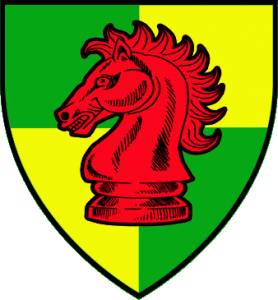
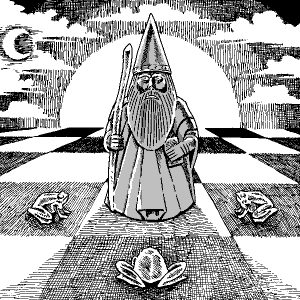

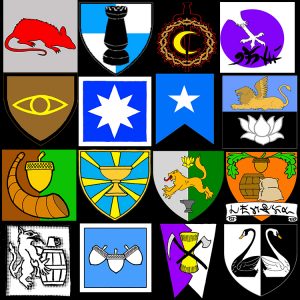
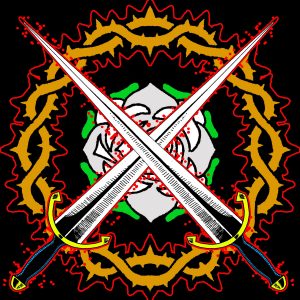 the White Rose Well smart in their uniform green cloaks with obsidian leaf clasp. They were in formation to the northeast of the White Rose Well in the plaza before the White Rose Perfumery dozens of feet away from the well. Captain Fenom wearing an open helm with a bright green and gleaming black feather plume was over by the well talking with the human duelist, Pabst (played by Jenn).
the White Rose Well smart in their uniform green cloaks with obsidian leaf clasp. They were in formation to the northeast of the White Rose Well in the plaza before the White Rose Perfumery dozens of feet away from the well. Captain Fenom wearing an open helm with a bright green and gleaming black feather plume was over by the well talking with the human duelist, Pabst (played by Jenn).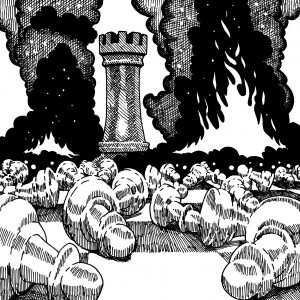
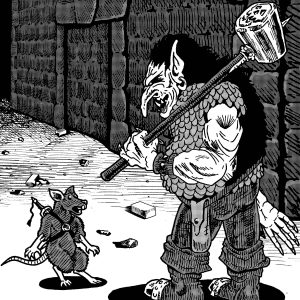
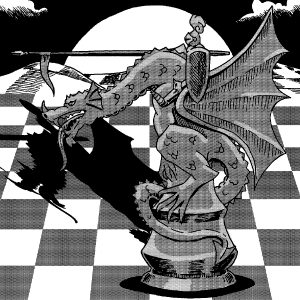
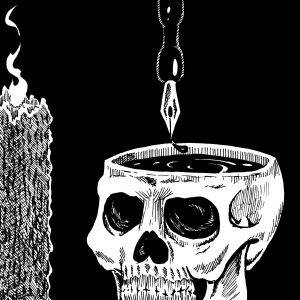 the structure of a typical fantasy RPG adventure. However, those familiar with my past articles can skip the “RPG Structure Primer” section.
the structure of a typical fantasy RPG adventure. However, those familiar with my past articles can skip the “RPG Structure Primer” section.